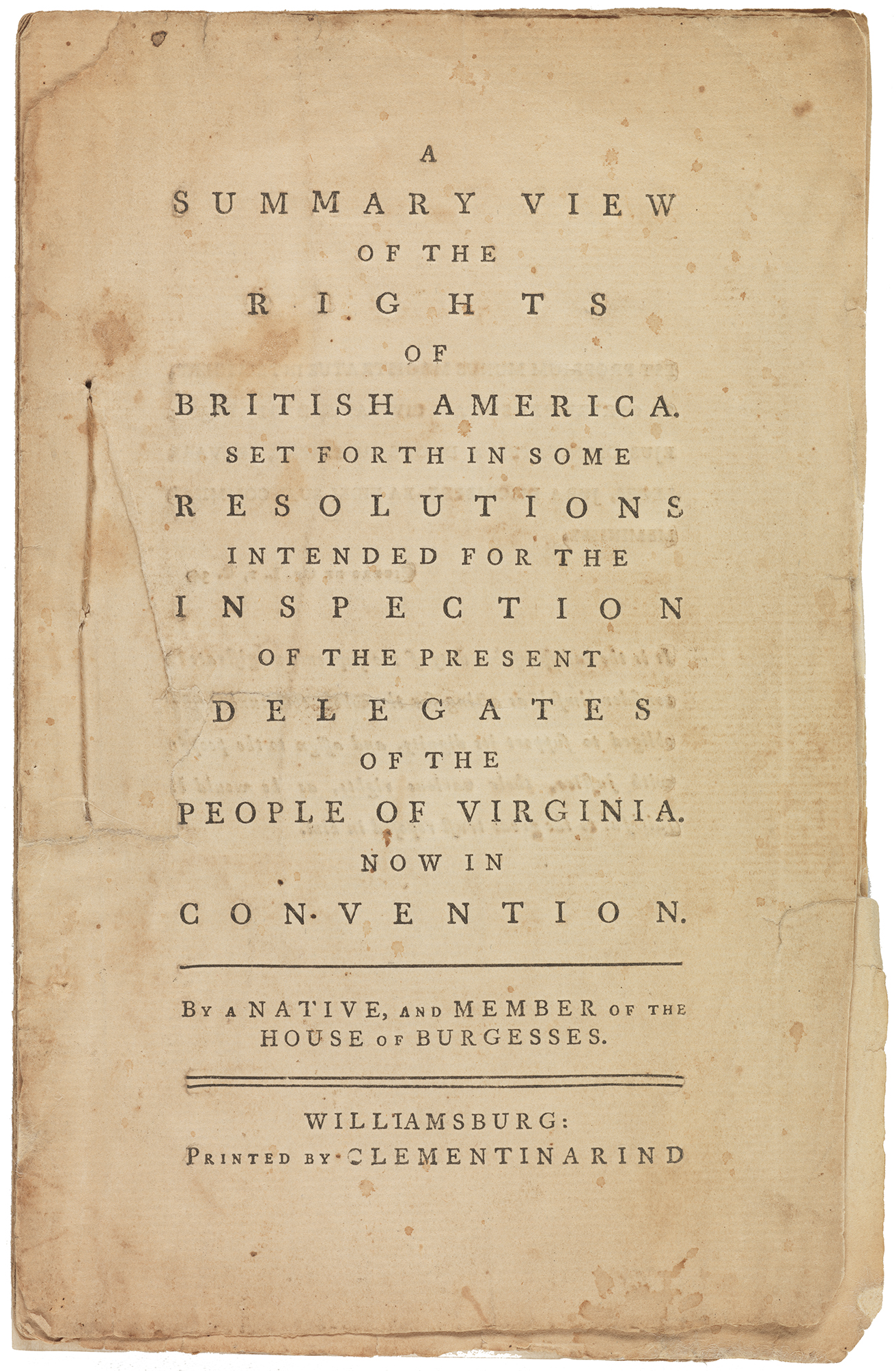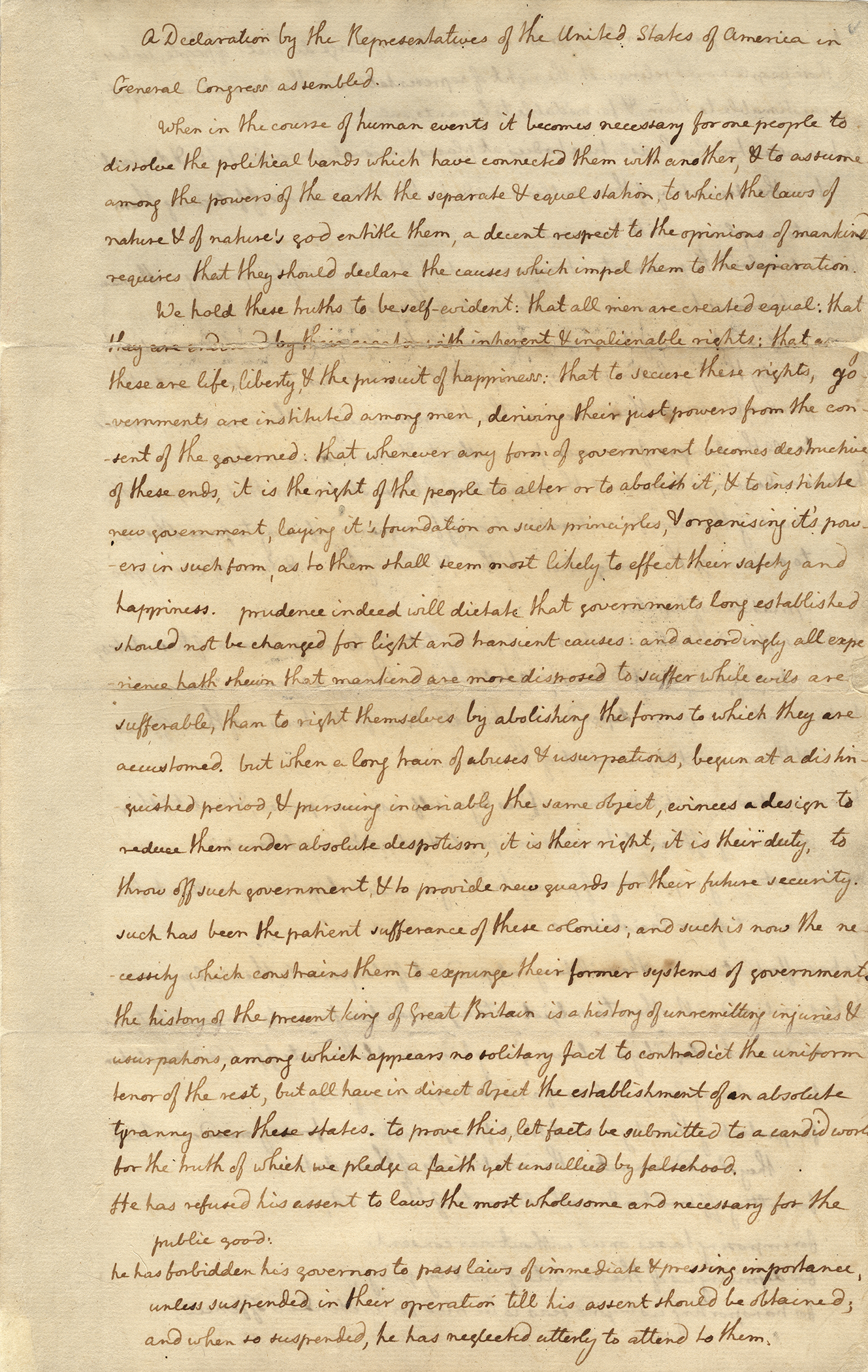The Continental Congress assigned to Thomas Jefferson the task of drafting a Declaration of Independence and then cut one-quarter of what he wrote. The original text survives, however, as does a copy made by John Adams of what remained after a first edit. Those copies, plus a 1776 printing of the finished document, were displayed in The Private Jefferson: From the Collections of the Massachusetts Historical Society, a special exhibition on display at the Virginia Museum of History and Culture in 2016-2017.
Jefferson got the job because he essentially had already written the declaration in his 1774 Summary View of the Rights of British America, a landmark in Virginia history. A contemporary printing (Williamsburg, 1774) is displayed at the VMHC in The Story of Virginia exhibition. Jefferson’s goal was to persuade the Virginia delegation to the First Continental Congress to take a forceful posture toward Great Britain, but in 1774 he stepped back from the brink: “It is not our wish, nor our interest, to separate from her.” The pamphlet stated the logical conclusion to the colonial protest movement that had begun in 1765: “the British parliament has no right to exercise authority over us.”
The importance of Summary View is proven by the reappearance in the Declaration of most of its ideas, beginning with Jefferson’s relentless attack of the king. For instance, in Summary View, Jefferson wrote that rights are derived from the laws of nature and are given by God to all people; that “free trade with all parts of the world” is a “natural right” that has been cut off by Great Britain; that “a series of oppressions” have been pursued by the king; that he has suspended colonial legislatures; that he has “laid his governors under such restrictions that they can pass no law”; and that he is “send[ing] over . . . mercenaries to invade & deluge us in blood.”


